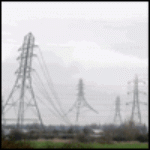Measurement of 30 output transformers for SE300B
194.214.158.221 |
||
| Posted on December 11, 2009 at 07:03:49 | ||
|
Posts: 154
Location: Paris, France Joined: January 31, 2007 |
Hello, During the last European Triode Festival, aside the "transformers shootout" , I could perform measurements on 30 output transformers for Single End 300B amplifiers. The document with the measurements is downloadable at the bottom of the page: European Triode Festival - ETF2009 Shootout http://www.triodefestival.net/index.php?page=etf2009-shootout look for: "see the measurements here". direct URL: http://forums.melaudia.net/attachment.php?aid=1228 Best regards from Paris, France Jean-Michel Le Cléac'h |
|
| but only by about 1 dB, look at the scale (nt), posted on December 11, 2009 at 17:18:44 | |
|
Posts: 716
Location: Northwest Joined: December 2, 2004 |
-t |
| Good summary Paul (nt), posted on December 14, 2009 at 19:35:27 | |
|
Posts: 2184
Location: Sydney Joined: September 2, 2005 |
Naz |
| Too bad that Audio Note OPT won..., posted on December 16, 2009 at 17:29:14 | |
|
Posts: 5550
Joined: June 23, 2009 |
"inconvenient truth" to most posting here ,hehehe |



